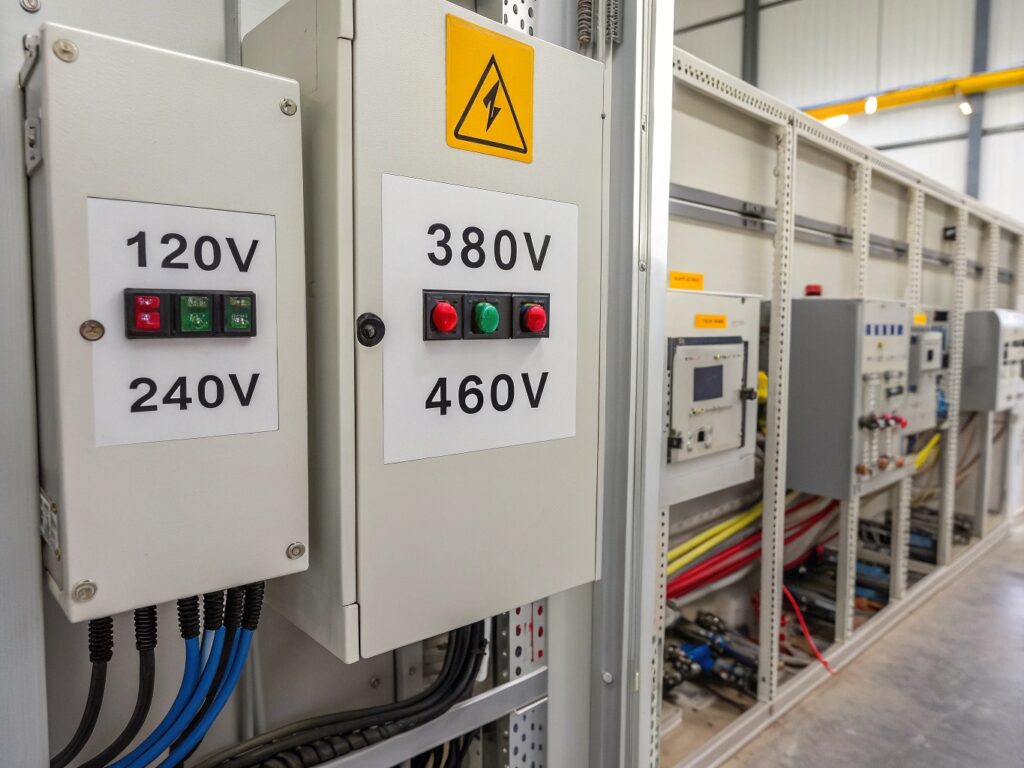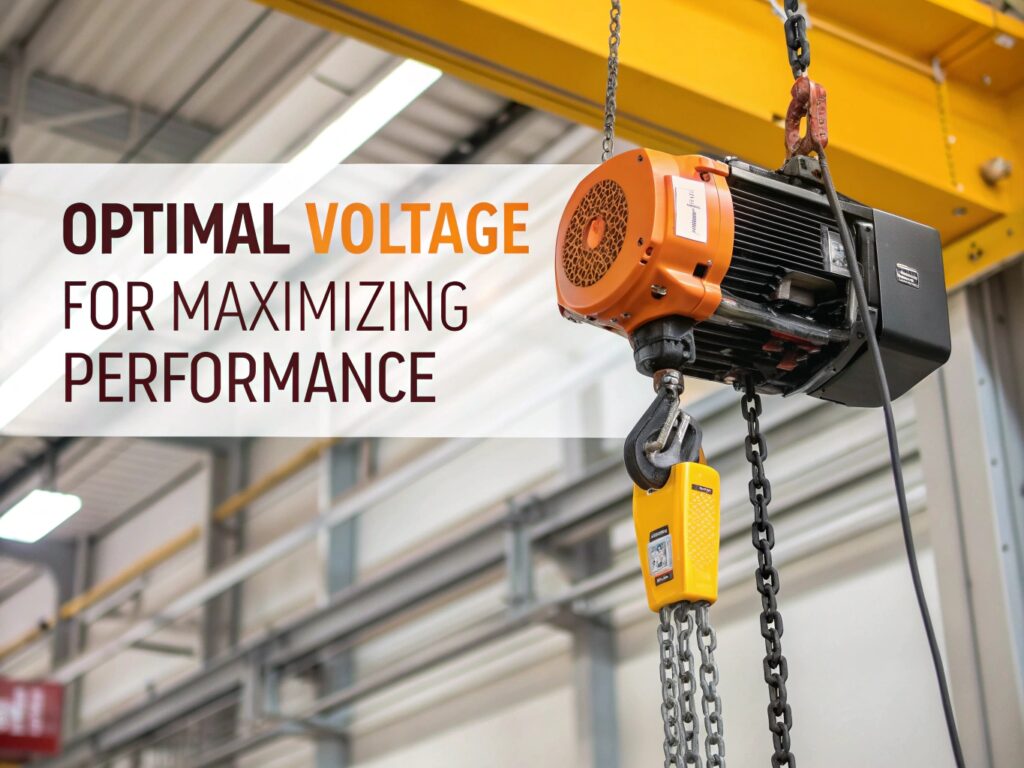Selecting the correct voltage for your electric chain hoist is essential for ensuring smooth operation and extending equipment life. Without the right voltage, your hoist can suffer from reduced efficiency or even malfunction. Let’s explore how to choose the optimal voltage for your hoist to avoid these issues.
Electric chain hoists typically require 120V for light-duty tasks, but for heavier lifts, 230V or even 460V is necessary to maintain optimal performance. The correct voltage helps prevent motor overload and ensures efficient operation.
With the right voltage, your electric chain hoist will function at its best, reducing the likelihood of breakdowns and helping your operations run smoothly. Let’s dive deeper into how voltage impacts performance and how to select the right one for your specific needs.
[Table of contents]
- What Voltage Should You Use for Electric Chain Hoists?
- How Voltage Affects Electric Chain Hoist Performance
- Why the Right Voltage is Crucial for Your Hoist
- Light vs. Heavy-Duty Hoists: Voltage Needs
- Common Voltage Options for Electric Chain Hoists
- Conclusion
What Voltage Should You Use for Electric Chain Hoists?
Choosing the right voltage is critical for ensuring your electric chain hoist works effectively. But how do you know which voltage is best for your needs?
For light-duty tasks, 120V is typically sufficient, while for heavier lifting tasks, you’ll need at least 230V. Heavy-duty hoists might even require 460V to ensure they perform optimally without damaging the motor.
Let’s take a closer look at how voltage directly affects your hoist’s performance and what can happen if you get it wrong.
How Voltage Affects Electric Chain Hoist Performance
Choosing the correct voltage is not just about matching numbers—it’s about performance. A voltage mismatch can lead to a host of problems that impact your hoist’s efficiency.
Underpowered hoists struggle to lift heavy loads, while overpowered ones risk motor damage. Proper voltage ensures your hoist runs efficiently, maximizing both power and safety.
Why Voltage Mismatches Are Risky
When your hoist doesn’t get the voltage it’s designed to operate at, it may underperform or even break down. For example, let’s say you’re trying to use a 120V hoist for a task that requires 230V. The motor won’t have enough power to lift the load, and over time, this could cause the motor to burn out.
On the flip side, using a 460V hoist for a light-duty job could lead to overheating, wasting energy, and reducing the hoist’s lifespan. These risks highlight how important it is to pick the right voltage for your project.
Why the Right Voltage is Crucial for Your Hoist
It might seem obvious, but choosing the correct voltage is essential for both safety and efficiency. Many accidents or breakdowns on the job site happen because the hoist is not receiving the correct voltage for the task.
Incorrect voltage can cause motor failure, slower lifting speeds, and excessive wear on components. Ensuring your hoist operates at its rated voltage keeps the motor in good health and prevents costly downtime.
Safety Concerns with Voltage Mismatches
Not only does incorrect voltage harm performance, but it also presents safety hazards. If your hoist is overpowered or underpowered, it can affect how precisely you can control the lifting process. In construction or industrial environments, this can lead to dangerous situations, such as equipment failure during lifting operations or even injury.
Always make sure that the voltage matches the hoist’s requirements and your job site’s power supply to minimize the risk of failure.
Light vs. Heavy-Duty Hoists: Voltage Needs
The size and purpose of your hoist play a big role in determining what voltage it needs. For lighter tasks, you can typically rely on 120V, while heavy-duty hoists may require 230V or 460V to perform at their best.
For light-duty applications, a 120V hoist is sufficient. For heavy-duty lifting, choose a hoist rated for 230V or even 460V to avoid strain on the motor and ensure proper performance.
How to Choose Based on Your Lifting Capacity
When you’re selecting a hoist, consider how much weight you plan to lift. A small hoist for occasional use may not require much power, but a hoist used for lifting heavy materials on a daily basis will need more voltage to ensure its motor remains efficient.
For example, a hoist that lifts up to 2.5 tons can usually operate on 230V, but anything beyond that—especially hoists lifting 5 tons or more—will require 460V for reliable performance.
Common Voltage Options for Electric Chain Hoists
Electric chain hoists come in a variety of voltage options, and it’s crucial to know what’s available in your area. Here are some of the most common voltage configurations:
- 120V: Standard for light-duty tasks, especially in residential or smaller commercial settings.
- 230V: The most common voltage for medium-duty hoists and industrial applications.
- 460V: Used for heavy-duty hoists, ideal for large construction projects or factories.

Voltage Standards Around the World
Different regions may have specific voltage standards. In North America, 120V and 240V are most common, while in Europe and Asia, you might find hoists operating at 380V or 460V. Always check the local electrical code or consult with a supplier to ensure your hoist matches the voltage standards in your area.
Conclusion
The voltage you choose for your electric chain hoist directly affects its performance and lifespan. Whether you need a 120V hoist for light jobs or a 460V hoist for heavy-duty tasks, it’s important to match the voltage to your hoist’s needs. This ensures safe, efficient operation and reduces the risk of costly breakdowns.



